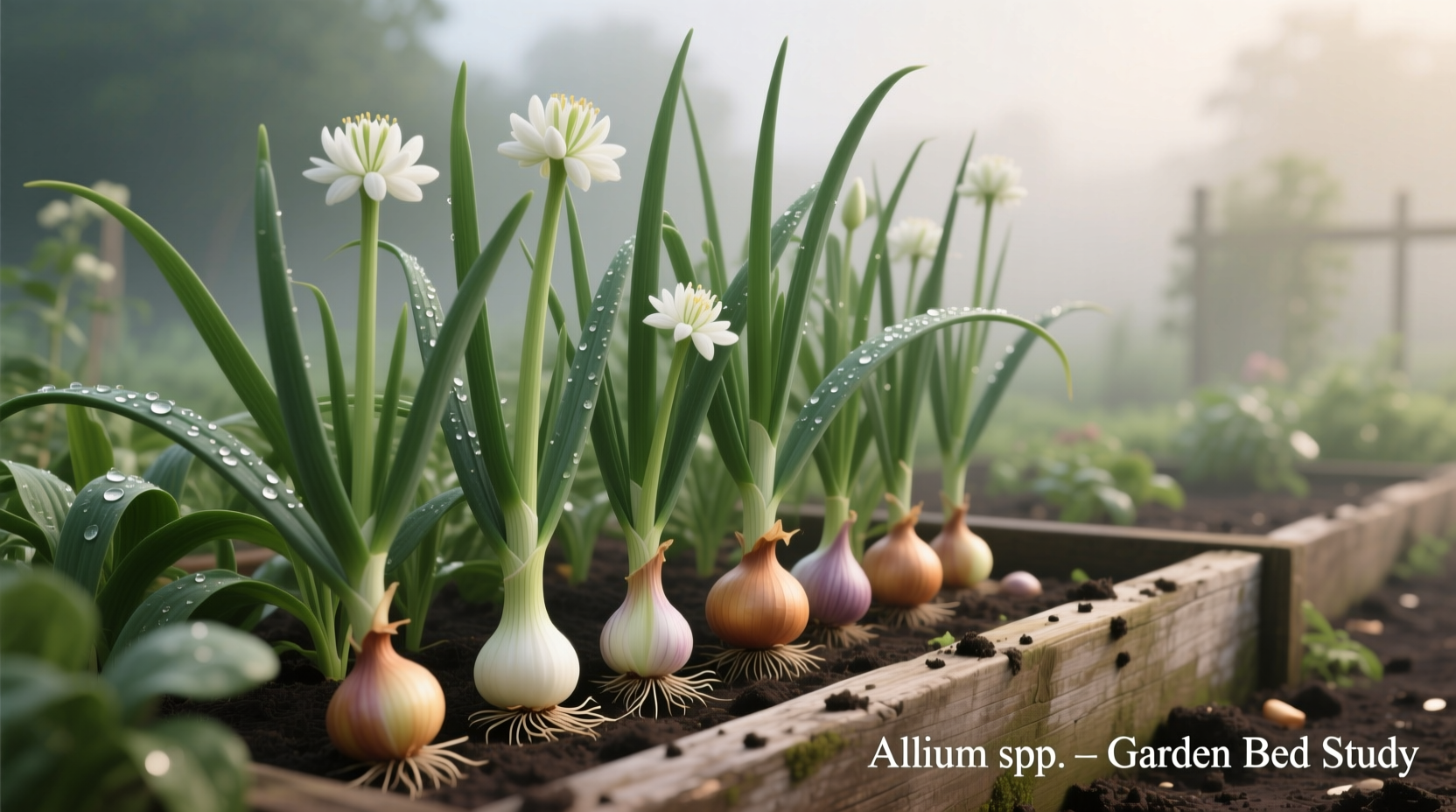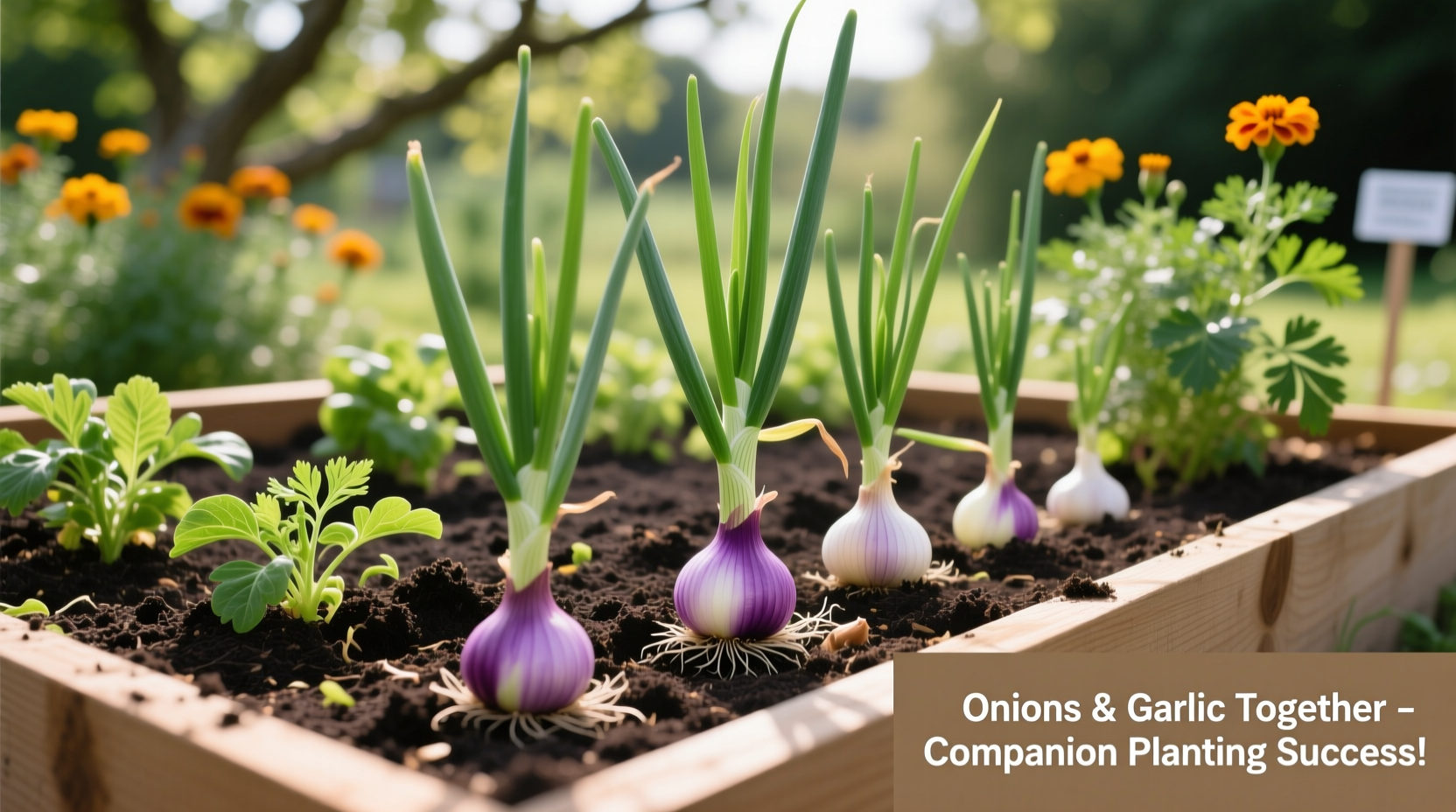Many home gardeners wonder if they can grow onions and garlic together in their vegetable plots. The good news is that not only can you grow these allium family members side by side, but doing so offers multiple benefits for your garden ecosystem. As experienced gardeners have discovered through centuries of practice, these two crops make excellent companions when planted with proper spacing and timing.
Why Onions and Garlic Thrive as Garden Companions
Onions (Allium cepa) and garlic (Allium sativum) belong to the same plant family, sharing similar environmental preferences that make them natural companions. Both require:
- Full sun exposure (6-8 hours daily)
- Well-draining soil with pH between 6.0-7.5
- Moderate watering (1 inch per week)
- Cooler temperatures during bulb formation
According to research from the University of California Agriculture and Natural Resources, alliums like onions and garlic naturally repel many common garden pests including aphids, Japanese beetles, and carrot flies through their sulfur compounds. When planted together, they create a stronger protective barrier for neighboring plants.
| Growing Requirement | Onions | Garlic |
|---|---|---|
| Optimal Soil pH | 6.0-7.5 | 6.0-7.5 |
| Water Needs | 1 inch/week | 1 inch/week |
| Planting Depth | 1-2 inches | 2-3 inches |
| Harvest Time | 100-170 days | 180-270 days |
Step-by-Step Guide to Planting Onions and Garlic Together
1. Soil Preparation (4-6 Weeks Before Planting)
Prepare your garden bed by incorporating 2-3 inches of compost and a balanced organic fertilizer. The USDA Natural Resources Conservation Service recommends testing your soil pH and adjusting with lime (to raise pH) or sulfur (to lower pH) as needed to reach the optimal 6.0-7.5 range.
2. Timing Your Planting
Planting timing differs slightly between these alliums:
- Garlic: Plant cloves in fall (4-6 weeks before first frost) for largest bulbs
- Onions: Plant sets or transplants in early spring after soil reaches 50°F
If planting both in spring, start with onions first, then follow with garlic 2-3 weeks later to account for garlic's longer growing season.

3. Proper Spacing Configuration
Spacing is critical when growing onions and garlic together. Follow these guidelines:
- Leave 4-6 inches between individual plants
- Space rows 12-18 inches apart
- Plant garlic slightly deeper (2-3 inches) than onions (1-2 inches)
- Alternate plants in a checkerboard pattern for optimal space use
The Cornell University Gardeners' Handbook notes that proper spacing prevents competition for nutrients while maintaining the pest-repelling benefits of close planting.
Common Challenges and Solutions
While onions and garlic generally grow well together, watch for these potential issues:
Nutrient Competition
Both plants are moderate feeders that require nitrogen early in growth and phosphorus/potassium during bulb formation. Solution: Apply a balanced fertilizer when plants reach 6 inches tall, then switch to a low-nitrogen, high-phosphorus formula as bulbs begin forming.
Disease Management
Though they share some disease vulnerabilities, proper spacing and crop rotation minimize risks. The University of Minnesota Extension reports that rotating alliums to new locations every 3-4 years reduces soil-borne disease pressure by up to 70%.
Harvesting and Storage Timeline
Understanding the different maturity timelines prevents harvest mistakes:
- Green onions: Harvest 60-80 days after planting when tops reach 6-8 inches
- Garlic scapes: Cut when curling (about 2 months before bulb harvest)
- Garlic bulbs: Harvest when 1/3 of leaves turn brown (typically July)
- Dry onions: Harvest when tops fall over naturally (late summer)
Proper curing is essential for storage. The National Gardening Association recommends curing both crops in a warm, dry, well-ventilated area for 2-3 weeks before storing at 32-40°F with 60-70% humidity.
What NOT to Plant Near Your Onion-Garlic Combination
While onions and garlic grow well together, avoid planting them near:
- Beans and peas (inhibit growth)
- Lentils (compete for nutrients)
- Sage (stunts growth)
Instead, consider adding carrots between your allium rows—carrots actually grow better when planted near onions and garlic as the alliums repel carrot flies.
Seasonal Rotation Planning
After harvesting your onion-garlic combination, rotate to a different plant family. The Rodale Institute's Farming Systems Trial shows that proper crop rotation increases soil health by 30% and reduces pest pressure by 50% compared to continuous planting.
Excellent follow-up crops include:
- Legumes (beans, peas) to replenish nitrogen
- Brassicas (broccoli, cabbage) which benefit from residual sulfur
- Leafy greens (lettuce, spinach) that prefer similar soil conditions











 浙公网安备
33010002000092号
浙公网安备
33010002000092号 浙B2-20120091-4
浙B2-20120091-4